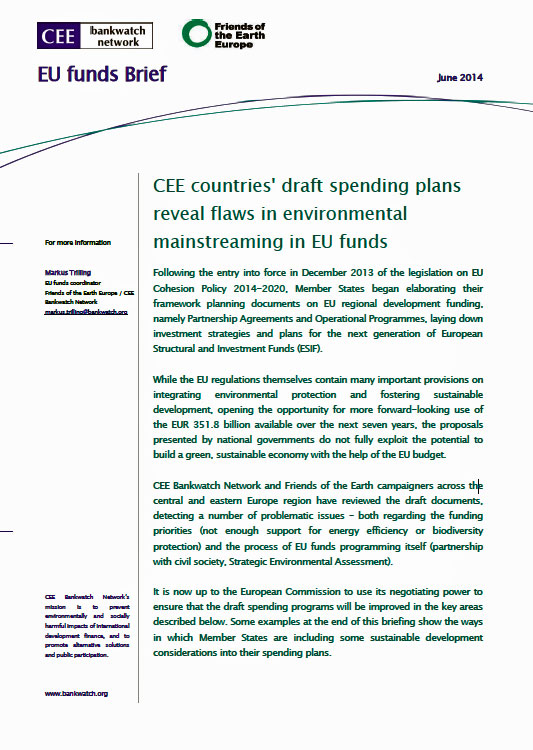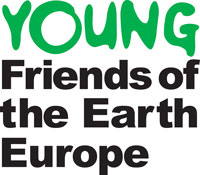
Following the entry into force in December 2013 of the legislation on EU Cohesion Policy 2014-2020, Member States began elaborating their framework planning documents on EU regional development funding, namely Partnership Agreements and Operational Programmes, laying down investment strategies and plans for the next generation of European Structural and Investment Funds (ESIF).
While the EU regulations themselves contain many important provisions on integrating environmental protection and fostering sustainable development, opening the opportunity for more forward-looking use of the EUR 351.8 billion available over the next seven years, the proposals presented by national governments do not fully exploit the potential to build a green, sustainable economy with the help of the EU budget.
CEE Bankwatch Network and Friends of the Earth campaigners across the central and eastern Europe region have reviewed the draft documents, detecting a number of problematic issues – both regarding the funding priorities (not enough support for energy efficiency or biodiversity protection) and the process of EU funds programming itself (partnership with civil society, Strategic Environmental Assessment).
It is now up to the European Commission to use its negotiating power to ensure that the draft spending programs will be improved in the key areas
described below. Some examples at the end of this briefing show the ways in which Member States are including some sustainable development considerations into their spending plans.







